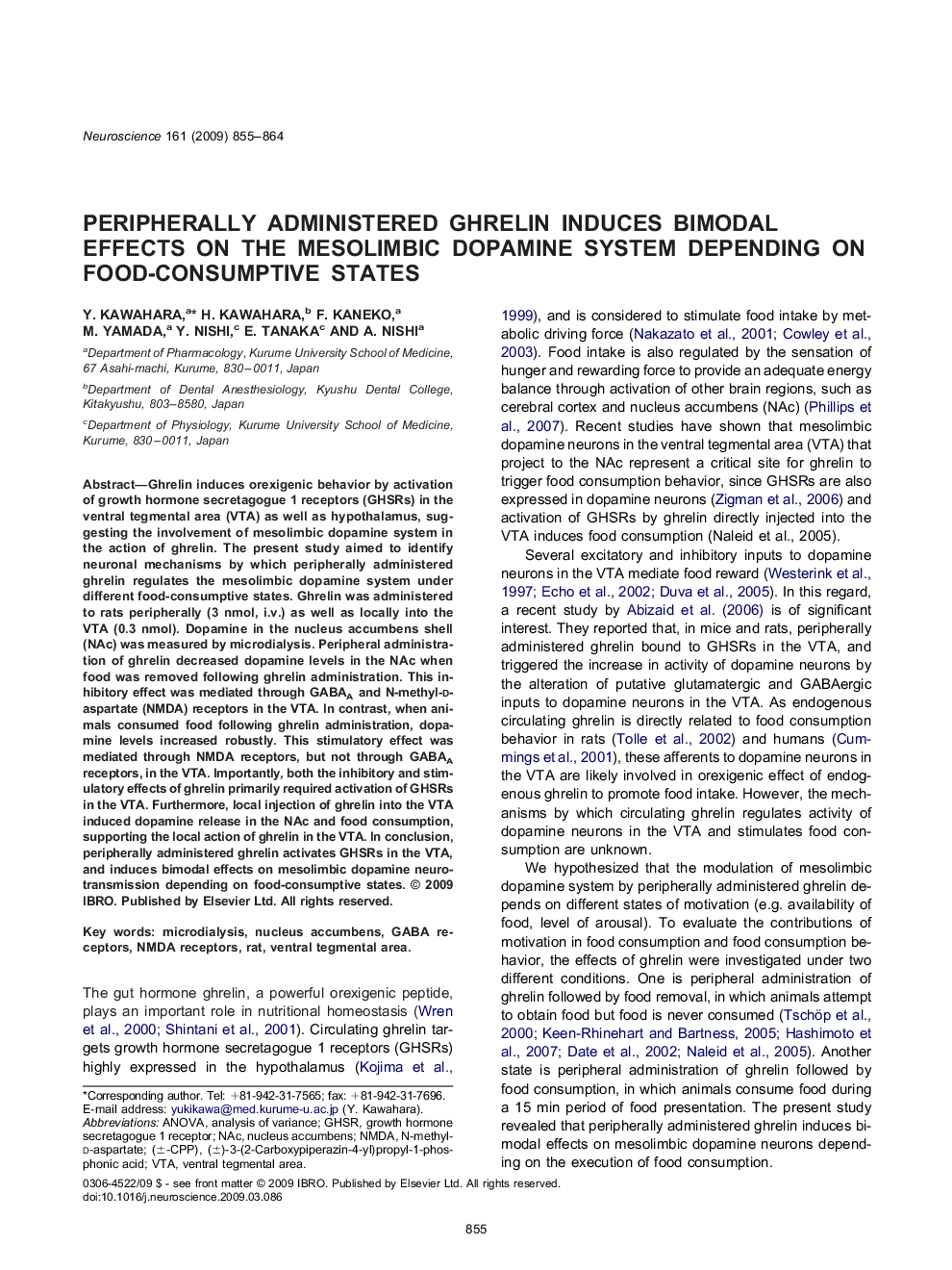| Article ID | Journal | Published Year | Pages | File Type |
|---|---|---|---|---|
| 4340018 | Neuroscience | 2009 | 10 Pages |
Ghrelin induces orexigenic behavior by activation of growth hormone secretagogue 1 receptors (GHSRs) in the ventral tegmental area (VTA) as well as hypothalamus, suggesting the involvement of mesolimbic dopamine system in the action of ghrelin. The present study aimed to identify neuronal mechanisms by which peripherally administered ghrelin regulates the mesolimbic dopamine system under different food-consumptive states. Ghrelin was administered to rats peripherally (3 nmol, i.v.) as well as locally into the VTA (0.3 nmol). Dopamine in the nucleus accumbens shell (NAc) was measured by microdialysis. Peripheral administration of ghrelin decreased dopamine levels in the NAc when food was removed following ghrelin administration. This inhibitory effect was mediated through GABAA and N-methyl-d-aspartate (NMDA) receptors in the VTA. In contrast, when animals consumed food following ghrelin administration, dopamine levels increased robustly. This stimulatory effect was mediated through NMDA receptors, but not through GABAA receptors, in the VTA. Importantly, both the inhibitory and stimulatory effects of ghrelin primarily required activation of GHSRs in the VTA. Furthermore, local injection of ghrelin into the VTA induced dopamine release in the NAc and food consumption, supporting the local action of ghrelin in the VTA. In conclusion, peripherally administered ghrelin activates GHSRs in the VTA, and induces bimodal effects on mesolimbic dopamine neurotransmission depending on food-consumptive states.
